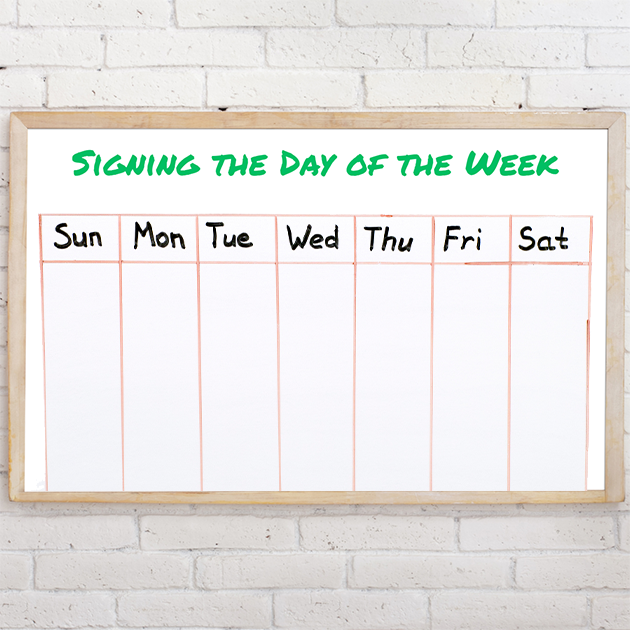FINGERSPELLING……that dirty BIG four-teen letter word!

In all my years of signing, I have never had anyone say to me, "I can't believe how easy fingerspelling is!" or "Man, I really LOVE fingerspelling all these odd words that don't have signs for them." It just isn't a favorite part of the job! It is the thing that makes even seasoned interpreters break into a sweat when they have to start signing for a calculus class or in a court of law with a bunch of foreign names flying through the air.
I have come up with a few tricks through the years to make it easier, but the only true way to improve your fingerspelling skills is to practice. The practice needs to be both receptive and expressive.
Signing Terminology
Expressive - When you are signing/fingerspelling something to someone else.
Receptive - When you are reading(watching) someone else's signing/fingerspelling
There are some good websites out there that offer some examples to get that receptive practice. (See our Facebook page for one sited there.) I also want to take this opportunity to show you a few ways Signing Savvy can help you with your fingerspelling. Although we have many savvy users of the site, it can be easy to overlook features if you have not used them before.
First, Signing Savvy shows a fingerspelled version of every word. When viewing a sign video, the squares next to the word indicate the different versions of the sign that exist and there is always a "FS" version, which lets you see the word fingerspelled. It is a good reference, however, you will notice that the "FS" version individually signs each letter and does not demonstrate the flow between the letters. (Note: There are some words that should always be fingerspelled and the main video is of the word being fingerspelled - see ASL as an example and notice the flow between letters). You will notice that underneath the video it tells you what is currently being signed, including the current letter being signed when fingerspelling a whole word.

Second, if you are a Signing Savvy Full Member you can use the Signing Savvy flashcards and quizzes to test yourself on fingerspelled words by creating a wordlist of only fingerspelled versions of words. If you want to add a word that has multiple signed versions to your wordlist, just make sure you are viewing the "FS" or fingerspelled version before adding it to your wordlist. Once you have all the words you want in your wordlist, use either the flashcard or quizzing feature in Signing Savvy to test yourself.
I thought it would be interesting to put the question out there to our Facebook followers and see if they could come up with a few interesting tricks of their own. Here are some of their suggestions:
- Fingerspelling while in the car.
Several people suggested the trick of fingerspelling while in the car (license plates, road signs, building names etc...). I like that idea but I just hope you are the passenger in the car at the time so that you aren't having to fingerspell the license plate of the car you rear-end because you are too focused on spelling the LONG name on the building you are passing!
If you are on a longer road trip, you could also play the "alphabet game" where you look for words (on signs, billboards, buildings, cars, etc.) that start with each letter of the alphabet, starting with A. You compete with others in the car by trying to be the first to get to Z. Each word you see, you would point at it and then fingerspell it. An alternate version would be to look for any item, not just words. Of course, again, this game is not recommended for the driver. - Focus on the whole word and not letter by letter.
Another suggestion from our Facebook friends was to focus on the whole word and not letter by letter. This allows you to have a better flow as well. It is also helpful to say the sounds of the letters, NOT the letter itself as you are spelling the word phonetically. (This works well with both expressive and receptive fingerspelling.) - Don't get fixated on each letter.
Don’t get fixated on each letter, rather focus on the entire word and the flow of the hand changing as you create the word in the air. This will also help in not allowing you to “throw your letters”, which is another common problem for new finger spellers.
Signing Terminology
"Throwing your letters" - This is something that many new signers do and it is a bouncing movement either up and down or forward that is disruptive and bothers with the reading of the fingerspelling. The elbow should stay still and just have the fingers moving and the wrist when appropriate.
We also need to remember the general rules for fingerspelling. It isn't right to makeup signs for words you don't know because they are too long to fingerspell. You may laugh, but I see it happen all the time! Some people have even used the excuse that they work with young children so they can't fingerspell. That is NOT true. When young children are fingerspelled to for small words that normally can be fingerspelled, they focus on the shape of the word. They will copy the shape to the best of their ability and then later they will make the connection to the alphabet. I have seen little children who are too young to know better, spelling words like BUS and BUG and are not even aware that they are spelling things.
I invite everyone to join us on our Facebook page where we have regular discussions and questions going back and forth about the hot topics in sign language and Deaf Education. It is just another great resource offered to you by Signing Savvy!
ADVERTISEMENTS







